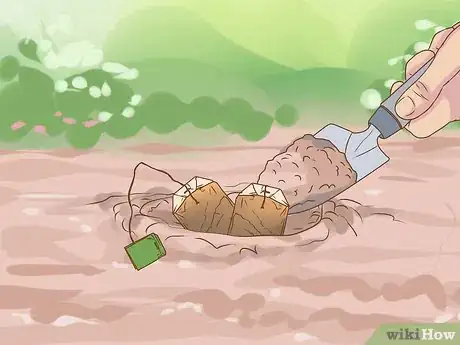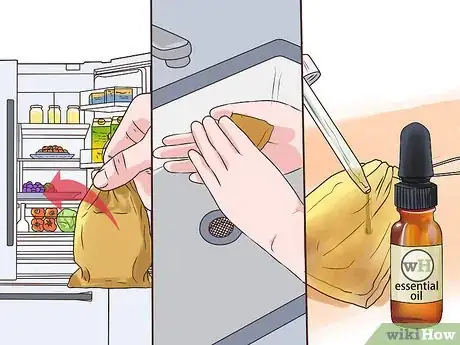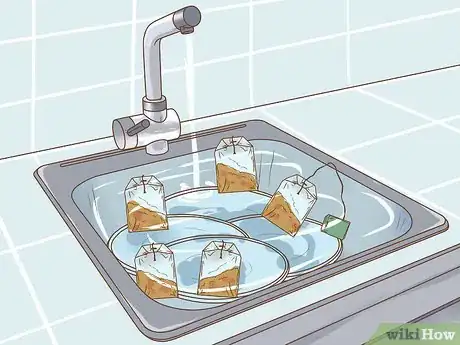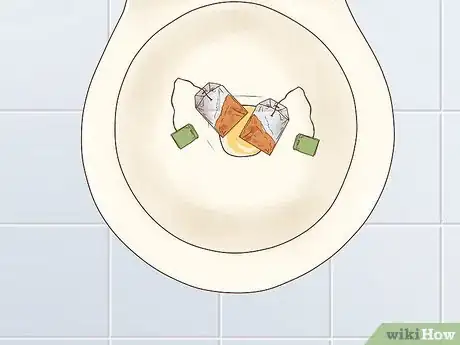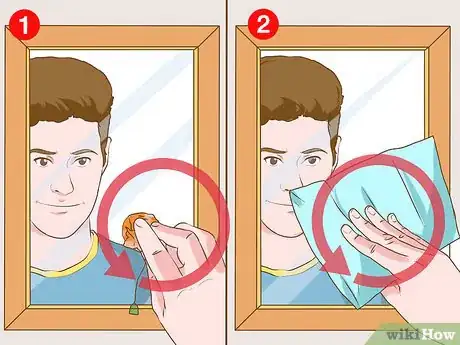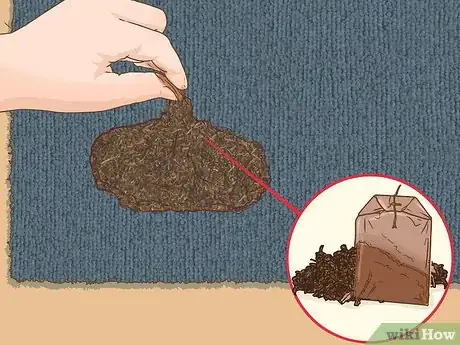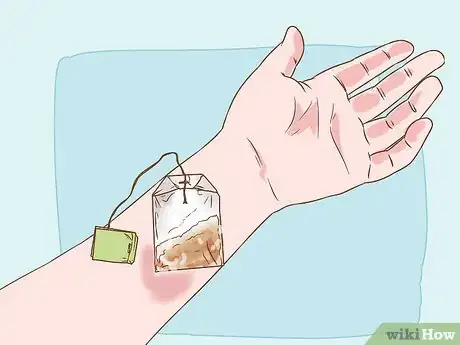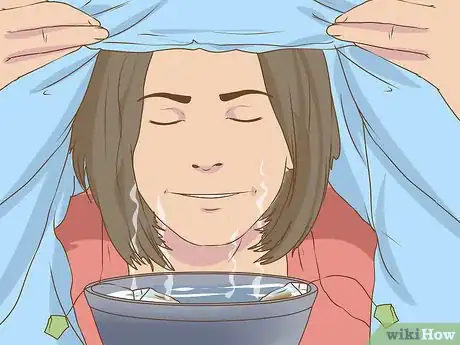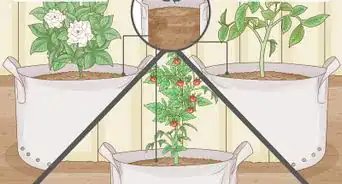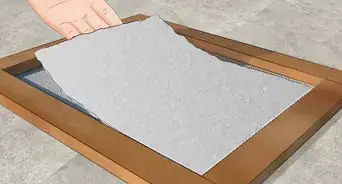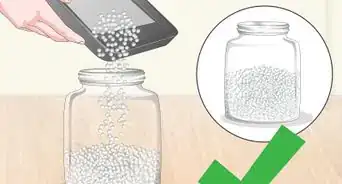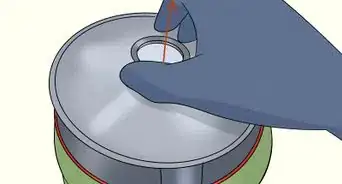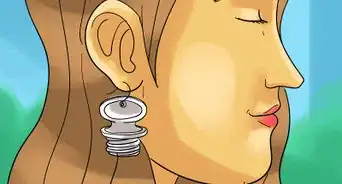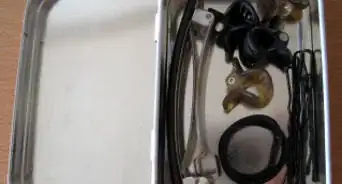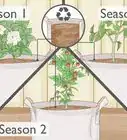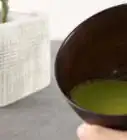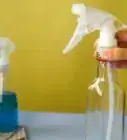This article was co-authored by Kathryn Kellogg. Kathryn Kellogg is the founder of goingzerowaste.com, a lifestyle website dedicated to breaking eco-friendly living down into a simple step-by-step process with lots of positivity and love. She's the author of 101 Ways to Go Zero Waste and spokesperson for plastic-free living for National Geographic.
There are 7 references cited in this article, which can be found at the bottom of the page.
This article has been viewed 135,960 times.
Teabags can be useful even after you have brewed your cup of tea. There are a myriad of both household and personal uses for used teabags. Reusing and repurposing teabags not only cuts down on waste, but can also improve your home and your health.
Steps
Using Old Teabags around the House
-
1Make double-brewed tea. Some people use the term 'double-brewed' tea to refer to concentrated tea that has been steeped twice, but the phrase can also be used to mean tea that has been brewed with reused teabags. Simply leave the teabags in the water for 2-3 minutes longer than usual to account for the loss of effectiveness.
- You should not reuse teabags in this manner more than once or twice.
- If you are not planning on reusing them right away, put them in the refrigerator in enough water to keep them completely wet. Storing used teabags at room temperature or in dry conditions can cause mold growth and invite unwanted bacteria.[1]
-
2Add flavor to food. Old teabags can be reused quite easily during cooking. Experimenting with old teabags in the kitchen may impart color and flavor to foods. For instance, adding chamomile or jasmine tea to rice can infuse it with a delicate fragrance, and Chai or cinnamon tea can boost the flavors in a simple bowl of oatmeal.
- Place old teabags in the water you are using to boil pasta or rice for added flavor.
- Add old teabags to the water you have just used to boil eggs for added flavor and color.
- Add tea to your meat smoker for tea-infused smoked meats.[2]
Advertisement -
3Care for your garden. Mixing teabags into soil has a great number of beneficial effects, including increasing nitrogen and acidity levels, attracting good bacteria, lowering the pH level of the soil, and giving earthworms something good to eat. You can also add old teabags to your compost pile, as long as they are not made of plastic and you remove any metal staples first.[3]EXPERT TIP
"Before you compost tea bags, check the packaging for a composting certificate, because a lot of bags today are made from plastic."
Kathryn Kellogg is the founder of goingzerowaste.com, a lifestyle website dedicated to breaking eco-friendly living down into a simple step-by-step process with lots of positivity and love. She's the author of 101 Ways to Go Zero Waste and spokesperson for plastic-free living for National Geographic.
Kathryn Kellogg
Eco-friendly Living Expert Kathryn Kellogg
Kathryn Kellogg
Eco-friendly Living Expert -
4Disguise bad odors. Because teabags are absorbent and aromatic, they can be used to mitigate offensive smells. Peppermint and cinnamon flavored teas in particular have a very strong and pleasant aromas.
- Place used teabags in the trashcan and refrigerator to dispel bad odors.
- Scrub your hands with used teabags to remove unpleasant scents like those of garlic or fish.
- Turn old teabags into air fresheners by waiting until they are completely dry and adding a couple of drops of essential oil, like lavender or peppermint.[4]
Using Old Teabags to Clean
-
1Degrease stubborn dishes. Active compounds found in tea are a natural alternative to harsh chemicals commonly found in store-bought dish soaps. Help degrease especially problematic dirty dishes by adding old teabags to a sink full of warm water and soaking them for a while before trying your hand at scrubbing them again.[5]
-
2Clean the very bottom of the toilet bowl. Set two or three used teabags in your toilet and let them sit for several minutes. Flush the toilet, then scrub the bottom of the bowl to help remove pesky stains at the bottom. Be careful, though—leaving the tea in the toilet for too long can actually cause more staining due to the tannins, so it might be better to use a lighter-colored tea for this purpose.[6]
-
3Shine your mirrors. Wipe your mirrors down with wet used teabags and then buff them dry with a soft cloth. The natural, active compounds in the tea help to break down scum, and making sure to dry the mirror in circular motions will help you achieve a streak-free shine.[7]
-
4Clean your carpet or rug. Split open your used teabags and wait for the tea leaves to become mostly dry. Then, sprinkle them all over your carpet or rug and wait until they are completely dry. Vacuum up the tea leaves, and not only will you have a cleaner carpet but your vacuum cleaner will smell better, too![8]
Using Old Teabags for Health
-
1Treat minor injuries. If you have a small problem area, like a mosquito bite or slight sunburn, the antioxidants in old teabags can potentially help you heal faster. The epigallocatechin-3-gallate or ECGC found in tea is also an anti-inflammatory. Polyphenols reduce redness, and tannins and theobromine reduce pain.[9]
- Apply a wet used teabag to the problem area and let sit until dry to benefit from these particular properties.
- If you are not yet satisfied with the results, you can re-wet the teabag and use it again in the exact same way.
- Injuries or problem areas for which this is potentially helpful include blisters, razor burn, sunburn, poison ivy, recent injection sites, acne, plantar warts, bruises, cold sores, bug stings or bites and even gums which are still bleeding from a lost baby tooth.[10]
-
2Soothe tired eyes. The caffeine found in tea can help shrink blood vessels around your eyes, reducing the appearance of dark circles, while the tannins help to improve your circulation. Refrigerate the used teabags for 20 minutes; the cooler temperature of the teabags will help reduce swelling. Make sure they are still damp, but not soaking wet, and apply them to your eyes for 15-20 minutes.[11]
-
3Add them to your foot soak, face steam, or bath. Add a couple of lavender, peppermint, or chamomile teabags to a hot foot soak or face-steaming bowl and the antioxidants will soften your skin while the enticing aromas help deal with any problematic odors in the area.[12]
- You can experience a similar effect over your entire body by adding a couple more of them to an entire bathtub full of hot water.
- This can also improve the health of your hair and scalp by way of antioxidants and vitamins, like vitamins C and E. Picking a smell that you particularly enjoy can have aroma-therapeutic effects to boot.
Community Q&A
-
QuestionIf I used a teabag for my eyes can I use the same one on my eyes again?
 Community AnswerTea is a natural product and once wet, is a great place for bacteria to grow, especially after it's been exposed to your eye area. Better to use a new bag each time.
Community AnswerTea is a natural product and once wet, is a great place for bacteria to grow, especially after it's been exposed to your eye area. Better to use a new bag each time. -
QuestionCan I drink green tea with the same bag again and again simply by adding more water?
 Community AnswerI reuse the bags all the time. It just depends on how strong you like your tea, as it will get more and more diluted over time.
Community AnswerI reuse the bags all the time. It just depends on how strong you like your tea, as it will get more and more diluted over time. -
QuestionHow many days I can use a single tea bag for my eyes?
 Community AnswerSince they need to stay moist, and moisture can grow mold over time, I would use a different one each time. If you still want to re-purpose the teabags after using them on your eyes, then you can empty the contents into a garden/compost pile.
Community AnswerSince they need to stay moist, and moisture can grow mold over time, I would use a different one each time. If you still want to re-purpose the teabags after using them on your eyes, then you can empty the contents into a garden/compost pile.
References
- ↑ https://www.apartmenttherapy.com/reusing-tea-bags-the-good-the-128466
- ↑ http://www.foxnews.com/real-estate/2011/08/15/49-uses-for-tea.html
- ↑ http://balconygardenweb.com/tea-bag-uses-in-garden/
- ↑ http://www.naturallivingideas.com/used-tea-bags/
- ↑ http://www.naturallivingideas.com/used-tea-bags/
- ↑ https://brightnest.com/posts/use-it-twice-before-tossing-tea-bags
- ↑ http://www.naturallivingideas.com/used-tea-bags/
- ↑ http://www.naturallivingideas.com/used-tea-bags/
- ↑ http://homeremediesforlife.com/tea-for-sunburn/
About This Article
You can reuse your teabags to sooth tired eyes by refrigerating them briefly and using them as a compress. In the garden, try mixing old teabags into the dirt to boost nitrogen levels and add good bacteria into the soil. You can also place old teabags in your refrigerator and trash can to keep your house smelling fresh! To learn how teabags can help heal minor injuries like sunburns or mosquito bites, keep reading.


